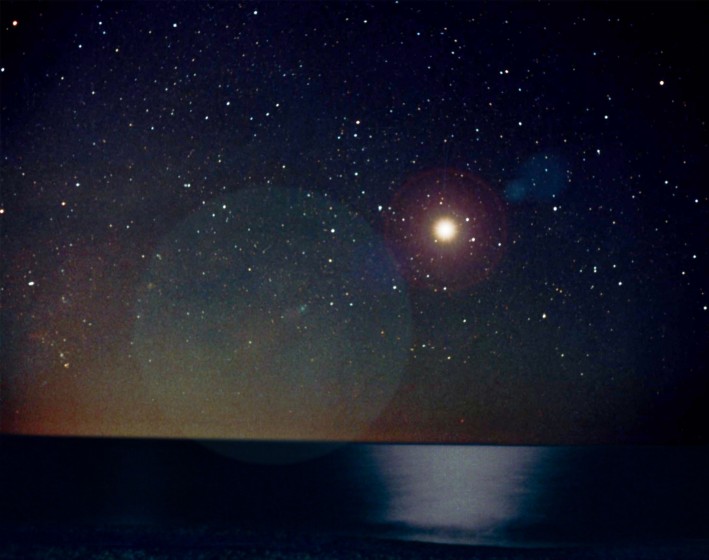Credit & Copyright: Tunc Tezel
Explanation:
A new star, likely the
brightest supernova in recorded
human history,
appeared in planet Earth's sky about 1,000 years ago today,
in 1006 AD.
The expanding debris cloud
from the stellar explosion
is still visible to modern
astronomers, but what did the supernova look like in 1006?
In celebration of the millennial anniversary of SN1006,
astronomer Tunc Tezel
offers this intriguing suggestion, based on a photograph
he took on February 22, 1998 from a site overlooking
the Mediterranean south of Antalya, Turkey.
On that date, bright Venus and a waning crescent Moon
shone in the early morning sky.
Adopting
calculations
which put the
supernova's
apparent brightness
between Venus and the crescent Moon,
he digitally superposed an appropriate new star in the picture.
He placed the star at the supernova's position in the
southerly constellation of Lupus
and used the water's reflection
of moonlight in the final image.
1999 2000 2001 2002 2003 2004 2005 2006 2007 2008 2009 2010 2011 2012 2013 2014 2015 2016 2017 2018 2019 2020 2021 2022 2023 2024 2025 |
Yanvar' Fevral' Mart Aprel' Mai Iyun' Iyul' Avgust Sentyabr' Oktyabr' Noyabr' Dekabr' |
NASA Web Site Statements, Warnings, and Disclaimers
NASA Official: Jay Norris. Specific rights apply.
A service of: LHEA at NASA / GSFC
& Michigan Tech. U.
|
Publikacii s klyuchevymi slovami:
supernova - magnitude - Luna - Sverhnovye - istoricheskie sverhnovye
Publikacii so slovami: supernova - magnitude - Luna - Sverhnovye - istoricheskie sverhnovye | |
Sm. takzhe:
Vse publikacii na tu zhe temu >> | |
